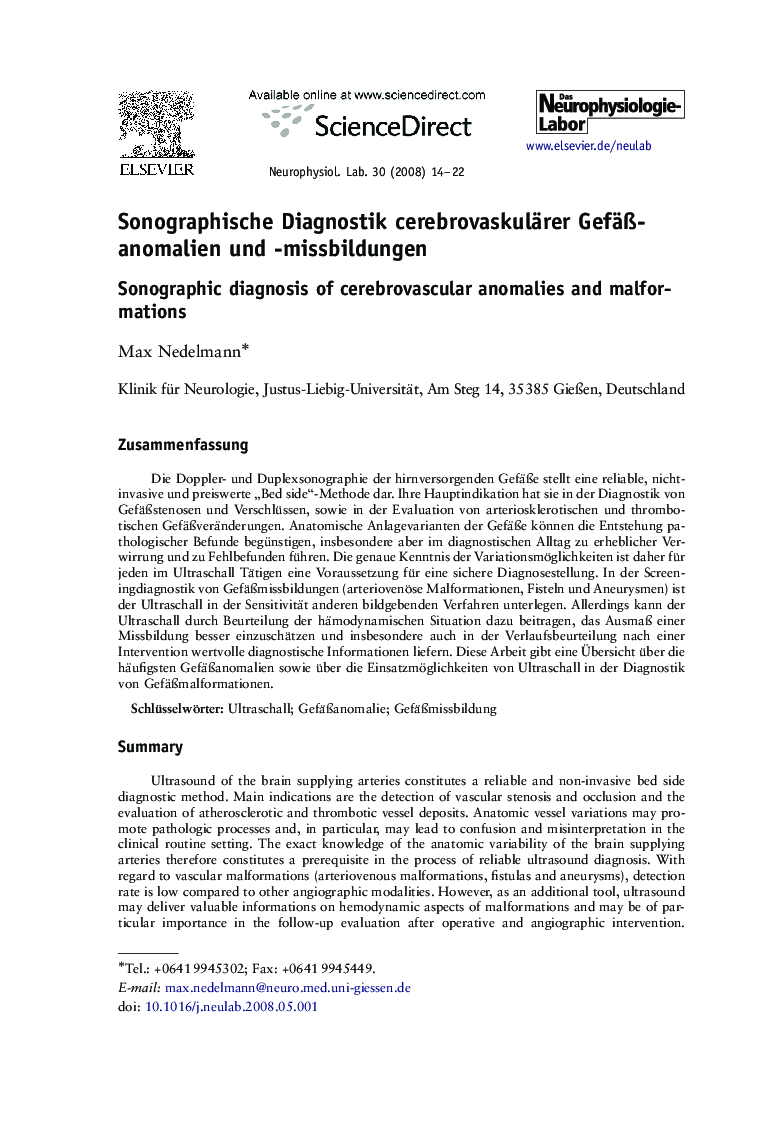| Article ID | Journal | Published Year | Pages | File Type |
|---|---|---|---|---|
| 2680791 | Das Neurophysiologie-Labor | 2008 | 9 Pages |
ZusammenfassungDie Doppler- und Duplexsonographie der hirnversorgenden Gefäße stellt eine reliable, nicht-invasive und preiswerte „Bed side“-Methode dar. Ihre Hauptindikation hat sie in der Diagnostik von Gefäßstenosen und Verschlüssen, sowie in der Evaluation von arteriosklerotischen und thrombotischen Gefäßveränderungen. Anatomische Anlagevarianten der Gefäße können die Entstehung pathologischer Befunde begünstigen, insbesondere aber im diagnostischen Alltag zu erheblicher Verwirrung und zu Fehlbefunden führen. Die genaue Kenntnis der Variationsmöglichkeiten ist daher für jeden im Ultraschall Tätigen eine Voraussetzung für eine sichere Diagnosestellung. In der Screeningdiagnostik von Gefäßmissbildungen (arteriovenöse Malformationen, Fisteln und Aneurysmen) ist der Ultraschall in der Sensitivität anderen bildgebenden Verfahren unterlegen. Allerdings kann der Ultraschall durch Beurteilung der hämodynamischen Situation dazu beitragen, das Ausmaß einer Missbildung besser einzuschätzen und insbesondere auch in der Verlaufsbeurteilung nach einer Intervention wertvolle diagnostische Informationen liefern. Diese Arbeit gibt eine Übersicht über die häufigsten Gefäßanomalien sowie über die Einsatzmöglichkeiten von Ultraschall in der Diagnostik von Gefäßmalformationen.
SummaryUltrasound of the brain supplying arteries constitutes a reliable and non-invasive bed side diagnostic method. Main indications are the detection of vascular stenosis and occlusion and the evaluation of atherosclerotic and thrombotic vessel deposits. Anatomic vessel variations may promote pathologic processes and, in particular, may lead to confusion and misinterpretation in the clinical routine setting. The exact knowledge of the anatomic variability of the brain supplying arteries therefore constitutes a prerequisite in the process of reliable ultrasound diagnosis. With regard to vascular malformations (arteriovenous malformations, fistulas and aneurysms), detection rate is low compared to other angiographic modalities. However, as an additional tool, ultrasound may deliver valuable informations on hemodynamic aspects of malformations and may be of particular importance in the follow-up evaluation after operative and angiographic intervention. This work reviews the most commonly found vascular anomalies and the value of ultrasound in the diagnostic workup of vascular malformations.
